-
 Bitcoin
Bitcoin $117500
2.15% -
 Ethereum
Ethereum $3911
6.19% -
 XRP
XRP $3.316
10.79% -
 Tether USDt
Tether USDt $1.000
0.01% -
 BNB
BNB $787.2
2.24% -
 Solana
Solana $175.2
4.15% -
 USDC
USDC $0.9999
0.00% -
 Dogecoin
Dogecoin $0.2225
8.40% -
 TRON
TRON $0.3383
0.28% -
 Cardano
Cardano $0.7868
6.02% -
 Stellar
Stellar $0.4382
9.34% -
 Hyperliquid
Hyperliquid $40.92
7.56% -
 Sui
Sui $3.764
7.63% -
 Chainlink
Chainlink $18.48
10.66% -
 Bitcoin Cash
Bitcoin Cash $582.1
1.88% -
 Hedera
Hedera $0.2601
6.30% -
 Avalanche
Avalanche $23.33
4.94% -
 Ethena USDe
Ethena USDe $1.001
0.02% -
 Litecoin
Litecoin $122.3
2.04% -
 UNUS SED LEO
UNUS SED LEO $8.969
-0.27% -
 Toncoin
Toncoin $3.339
0.86% -
 Shiba Inu
Shiba Inu $0.00001287
4.30% -
 Uniswap
Uniswap $10.43
7.38% -
 Polkadot
Polkadot $3.861
5.08% -
 Dai
Dai $1.000
0.02% -
 Bitget Token
Bitget Token $4.513
3.41% -
 Monero
Monero $267.7
-6.18% -
 Cronos
Cronos $0.1499
4.14% -
 Pepe
Pepe $0.00001110
5.15% -
 Aave
Aave $284.9
8.28%
What is Cardano's mining method?
Cardano's Delegated Proof-of-Stake mechanism, powered by the Ouroboros multi-phase protocol, promotes eco-friendly staking as an alternative to energy-intensive mining.
Feb 17, 2025 at 10:24 am
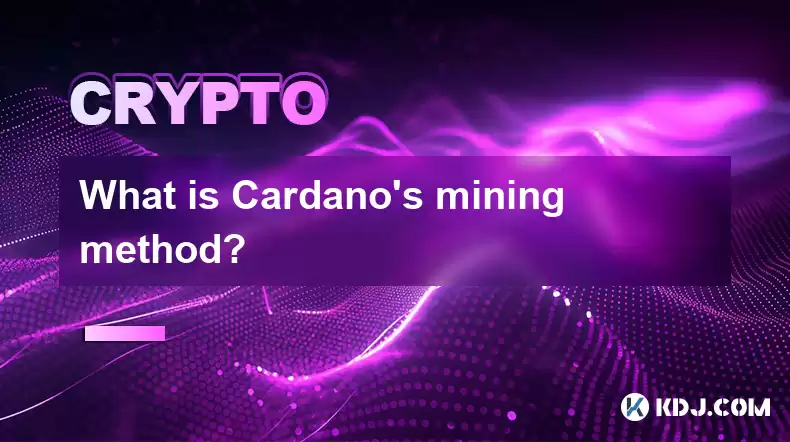
Key Points:
- Cardano employs a Proof-of-Stake consensus mechanism instead of mining.
- Delegated Proof-of-Stake (DPoS) underpins the PoS mechanism in Cardano.
- Ouroboros, a multi-phase protocol, underlies the PoS implementation in Cardano.
- Unlike mining, staking in Cardano involves pledging ADA tokens to validators.
- Staking rewards in Cardano are dependent on the amount of ADA staked and the pool's performance.
Article:
Understanding Cardano's PoS Mining Method:
- Proof-of-Stake Consensus Mechanism:
Unlike traditional Proof-of-Work (PoW) systems like Bitcoin, which rely on computationally intensive mining to secure the network and validate transactions, Cardano leverages a Proof-of-Stake (PoS) consensus mechanism. In PoS, the validation of new blocks and transaction verification is based on the amount of cryptocurrency tokens held by the validators within the network.
- Delegated Proof-of-Stake (DPoS) in Cardano:
Cardano employs a specific variant of PoS called Delegated Proof-of-Stake (DPoS). In a DPoS system, token holders are not responsible for directly validating transactions themselves. Instead, they can delegate their staking power to validators within the network. These validators are responsible for creating new blocks and verifying transactions on behalf of the delegating token holders.
- Ouroboros: A Multi-Phase PoS Protocol:
Cardano's DPoS mechanism is further enhanced by a multi-phase protocol known as Ouroboros. Ouroboros consists of the following phases:
- Genesis phase: This phase initializes the blockchain and determines the initial set of validators.
- Slot assignment phase: Here, validators are randomly assigned specific time slots for block creation.
- Block creation phase: In their assigned slots, validators create candidate blocks.
- Challenge phase: Validators verify the candidate blocks and participate in the consensus process to determine the legitimate block.
- Staking in Cardano:
Instead of "mining" like in PoW systems, Cardano users participate in staking. To stake ADA tokens, holders can choose to run a stake pool or delegate their ADA to a stake pool operated by a third party. Validators who successfully create new blocks are rewarded with ADA tokens, which are then shared with delegators based on their stake.
- Staking Rewards and Performance:
The rewards for staking ADA tokens in Cardano are proportional to the number of tokens staked and the performance of the stake pool. The more tokens staked, the higher the potential rewards. Moreover, choosing a high-performing stake pool with a consistent block production record can further enhance staking rewards.
FAQs:
- What is the advantage of DPoS over other PoS variants?
DPoS offers several advantages, including:
- Increased transaction speed and scalability: DPoS reduces the computational requirements for transaction validation, improving transaction throughput and reducing latency.
- Energy efficiency: DPoS consumes far less energy compared to PoW, reducing its environmental impact.
- Accessibility: DPoS makes staking accessible to a wider range of participants, as token holders can delegate their stake to validators without the need for specialized hardware or technical expertise.
- How secure is the Ouroboros protocol?
Ouroboros has been rigorously evaluated and is widely considered one of the most secure PoS protocols in the blockchain industry. Its multi-phase process, random slot assignment, and challenge mechanisms ensure the integrity and security of the Cardano blockchain.
- What's the difference between staking and running a stake pool?
Staking involves delegating ADA tokens to a stake pool operated by a third party, while running a stake pool requires setting up the necessary infrastructure, maintaining the pool, and participating in the block creation process. Running a stake pool offers the potential for higher rewards but also carries more technical responsibilities and risks.
- How can I stake my ADA tokens?
To stake ADA, you can either run a stake pool or delegate your tokens to an existing stake pool. To delegate your tokens, you can use a supported wallet or interact directly with stake pools through the Cardano blockchain explorer.
Disclaimer:info@kdj.com
The information provided is not trading advice. kdj.com does not assume any responsibility for any investments made based on the information provided in this article. Cryptocurrencies are highly volatile and it is highly recommended that you invest with caution after thorough research!
If you believe that the content used on this website infringes your copyright, please contact us immediately (info@kdj.com) and we will delete it promptly.
- Stablecoins, Hong Kong, and On-Chain Finance: Navigating the Regulatory Maze
- 2025-08-08 12:30:12
- Tron's Sell-Off Spurs Altcoin Shift: What's Next for TRX?
- 2025-08-08 08:30:12
- Euler, DeFi, and Coinbase: A New York Minute on the Latest Buzz
- 2025-08-08 12:30:12
- RUVI Presale: Is the Growth Potential Real?
- 2025-08-08 09:10:12
- Sleep Token's US Takeover: Thornhill Rides the 'Even In Arcadia' Wave
- 2025-08-08 08:30:12
- FTT Token's Wild Ride: Creditor Repayments vs. Market Drop - A New Yorker's Take
- 2025-08-08 07:10:12
Related knowledge

Where can I buy UMA (UMA)?
Aug 07,2025 at 06:42pm
Understanding UMA and Its Role in Decentralized FinanceUMA (Universal Market Access) is an Ethereum-based decentralized finance (DeFi) protocol design...
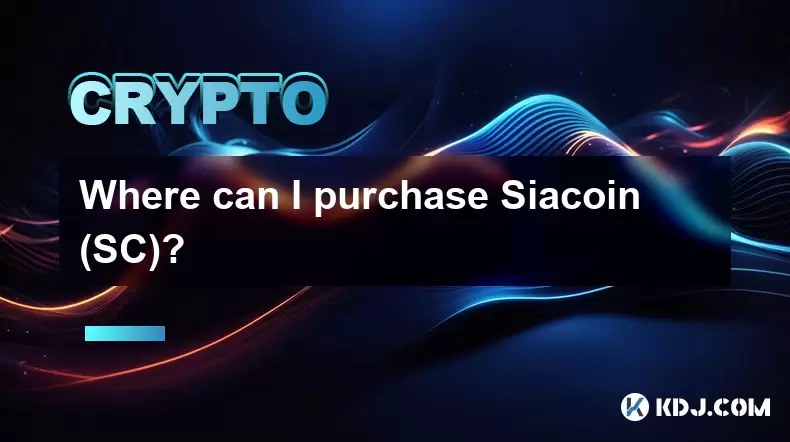
Where can I purchase Siacoin (SC)?
Aug 08,2025 at 11:14am
Understanding Siacoin (SC) and Its Role in the Sia NetworkSiacoin (SC) is the native cryptocurrency of the Sia decentralized cloud storage platform, a...
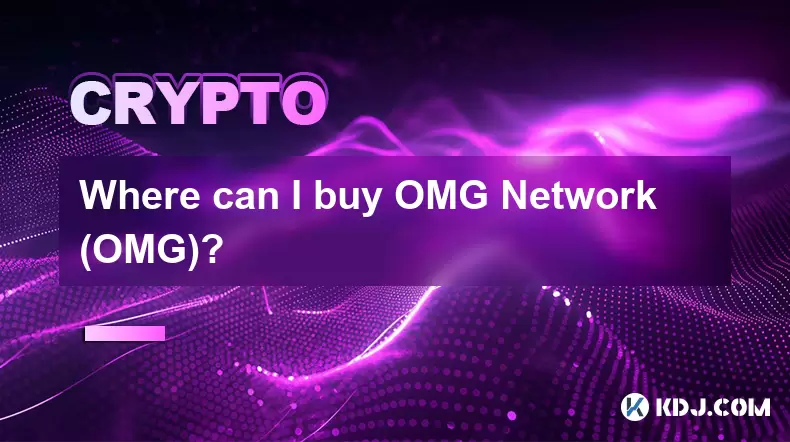
Where can I buy OMG Network (OMG)?
Aug 08,2025 at 12:57pm
Understanding OMG Network (OMG) and Its PurposeThe OMG Network, originally known as OmiseGO, is a layer-2 scaling solution built on the Ethereum block...
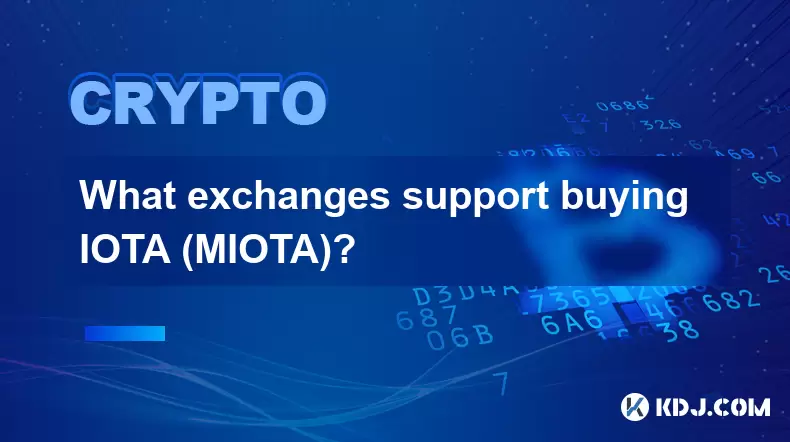
What exchanges support buying IOTA (MIOTA)?
Aug 07,2025 at 09:58pm
Understanding the Role of Private Keys in Cryptocurrency SecurityIn the world of cryptocurrency, private keys are the cornerstone of ownership and con...
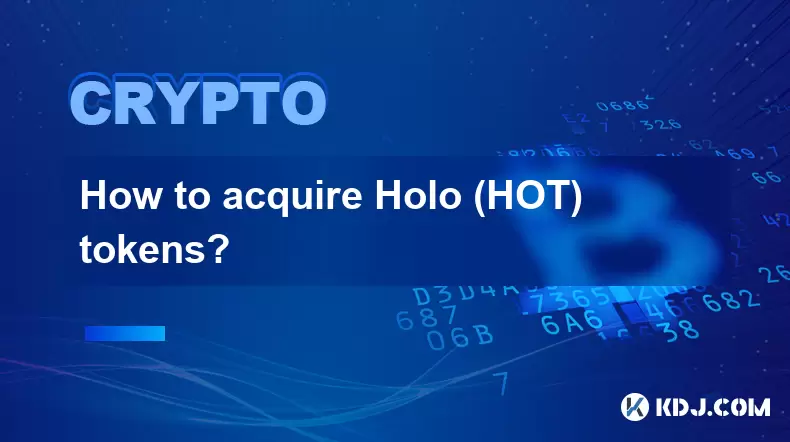
How to acquire Holo (HOT) tokens?
Aug 08,2025 at 05:56am
Understanding Holo (HOT) and Its EcosystemHolo (HOT) is a cryptocurrency token associated with the Holo ecosystem, which is built on the Holochain fra...
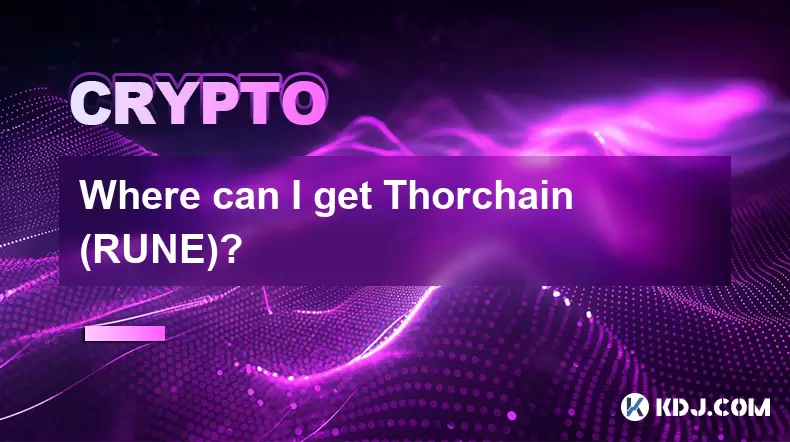
Where can I get Thorchain (RUNE)?
Aug 08,2025 at 08:07am
Understanding the Role of Seed Phrases in Cryptocurrency WalletsA seed phrase, also known as a recovery phrase or mnemonic phrase, is a critical compo...

Where can I buy UMA (UMA)?
Aug 07,2025 at 06:42pm
Understanding UMA and Its Role in Decentralized FinanceUMA (Universal Market Access) is an Ethereum-based decentralized finance (DeFi) protocol design...

Where can I purchase Siacoin (SC)?
Aug 08,2025 at 11:14am
Understanding Siacoin (SC) and Its Role in the Sia NetworkSiacoin (SC) is the native cryptocurrency of the Sia decentralized cloud storage platform, a...

Where can I buy OMG Network (OMG)?
Aug 08,2025 at 12:57pm
Understanding OMG Network (OMG) and Its PurposeThe OMG Network, originally known as OmiseGO, is a layer-2 scaling solution built on the Ethereum block...

What exchanges support buying IOTA (MIOTA)?
Aug 07,2025 at 09:58pm
Understanding the Role of Private Keys in Cryptocurrency SecurityIn the world of cryptocurrency, private keys are the cornerstone of ownership and con...

How to acquire Holo (HOT) tokens?
Aug 08,2025 at 05:56am
Understanding Holo (HOT) and Its EcosystemHolo (HOT) is a cryptocurrency token associated with the Holo ecosystem, which is built on the Holochain fra...

Where can I get Thorchain (RUNE)?
Aug 08,2025 at 08:07am
Understanding the Role of Seed Phrases in Cryptocurrency WalletsA seed phrase, also known as a recovery phrase or mnemonic phrase, is a critical compo...
See all articles

























































































